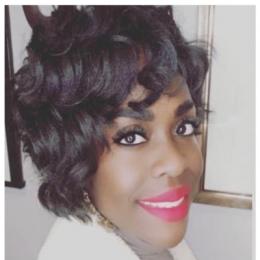Cheat Sheet
- Yes, you too. We all have biases, even if were not fully aware of them.
- Bias in the workplace. Biases can negatively impact everything from recruitment, retention, upward mobility, and termination.
- Common types and patterns. Learn to recognize common bias types and patterns often encountered in the workplace.
- The goal. Recognizing bias is the first step toward building a more inclusive workplace.
Are you biased? That is the question. Actually, that’s not really the question. The fact is that we’re all biased. The real question is how can we change?
We cringe when we hear the four-letter word bias. We hesitate to admit we have them. Why? Because we often equate bias to a deliberate act of negative prejudice against a person or a group of people.
In reality, most biases are beyond our control simply because we are not even aware that we have them. Coined “unconscious biases” or “implicit biases,” everyone has them. Our biases are formed by our upbringing, the schools we attend, people we associate with, communities we live in, the media we consume, our workplaces, and various life experiences we have.
If we’re all biased, then why should we care to change? Because these biases are negatively impacting every element of the employment experience in our workplaces — from the selection process to termination and everything in between.
Common types of biases
Before we can change, we need to understand common types of biases encountered in the workplace and be able to identify bias patterns.
Affinity bias
The tendency to feel a special connection with and favor people who are like us. A common example: favoring candidates who attended the same college you did.
Age bias
Assuming that specific age groups or generations are more suitable for the job or the assignment. For instance, this bias could show up as believing that younger employees are better suited for hi-tech roles.
Attractiveness bias
Judging someone based on how attractive or in shape you think they are, as in viewing physically attractive and in shape people as more intelligent, capable, and successful than less attractive people.
Attribution bias
Seeing some people or groups of people as less competent than others, thus focusing on their drawbacks and mistakes and undervaluing their contributions and successes.
This bias reveals itself most commonly when we assume that women are less competent than men. Therefore, we give them less credit for their accomplishments (“she got lucky”) or put more blame on them for their mistakes.
Confirmation bias
The tendency to seek out or favor information that confirms the beliefs you already have. This bias may lead to you overlooking or rejecting information that doesn’t confirm your pre-existing beliefs.

You may have grown up believing that Asian Americans are timid and not good public speakers. So, when deciding who on your team should deliver the report to the executives, you overlook your Asian American colleague because you focus on the fact that she stays quiet during team meetings and ignore the fact that she has recently spoken on panels at three conferences.
Conformity bias
Allowing the views of others influence our own views (aka groupthink). For example, conformity bias can cause you to sway your opinion about a job candidate to match the opinion of others on the hiring team.
Gender bias
Assuming that one gender is more suitable for the job or the assignment. Have you ever thought to yourself that men are better pilots or surgeons? That’s gender bias at work.
Halo/horns bias
The tendency to think more highly of someone if you learn something remarkable about them, or on the other hand, the tendency to think negatively about someone after learning something unflattering about them.
Do you tend to put Harvard or Yale graduates on a pedestal? Have you ever decided not to consider someone for a promotion simply because you disliked that individual’s mannerisms? These are the ways the halo and the horns biases can reveal themselves.
Name bias
Judging someone based on their name and perceived national or ethnic origin. How does this bias show up? Favoring job candidates with names of Anglo origin.
Perception bias
The tendency to form one-dimensional stereotypes and assumptions about a group of people, making it difficult to view individuals in that group objectively.

One example of how this bias may come up is overlooking a Hispanic female who is a rising star with emotional intelligence for a negotiator position because you view white males as most effective negotiators.
Race bias
Assuming that one race is more suitable for the job or the assignment, as in — for instance — when you view white employees as being better candidates for management positions.
Common bias patterns
It’s not enough to know what common biases are in the workplace, but it’s also important to recognize how they usually show up. Therefore, we need to understand the common bias patterns (as coined by Joan Williams, a pioneer on gender bias issues), before we can begin to interrupt them. Here are some real-life examples of common bias patterns.
Prove-it-again
Carolyn at ABC Company has been working as a transactional attorney for four years. She’s well-liked by her clients, is always responsive and prepared during meetings, and continues to deliver exceptional service. ABC Company is going through a major acquisition and is putting together a team of attorneys to support it. Carolyn’s manager approaches her about joining the team and asks Carolyn to put together a memo highlighting the work she has done in this area to confirm she is able to do the job. Carolyn’s male co-workers, however, are not asked to put together a similar memo.
This is an example of the “prove-it-again”bias pattern where women and minorities have to prove time and again that they are competent. This bias pattern can fuel attribution or gender bias, where some groups (in this example, women) are seen as less competent as their male colleagues, and their prior successes are undervalued, which is why they tend to have to prove-it-again.
Tightrope
What advice would you have for Samantha in this example? Samantha is so excited, yet nervous, about her presentation to top company executives. She prepared for weeks for this presentation and today’s the big day! She walks into the room 20 minutes early, ready to present.
After what she thought was a successful meeting, she overhears two of the male executives making comments about her response to certain questions being too shrill. Samantha immediately becomes discouraged.
When women try to exhibit these traits in the workplace, they are met with rejection, and in some cases, described as the horrific five-letter “B” word.
This is an example of the “tightrope” bias pattern where women are constantly balancing the push between masculinity and femininity. Masculinity is viewed as having confidence, being smart, and knowing how to lead. However, when women try to exhibit these traits in the workplace, they are met with rejection, and in some cases, described as the horrific five-letter “B” word.
This example highlights how perception or gender bias plays out in the workplace. In this example, Samantha does not conform to the perception of the two male executives regarding how women should “carry themselves.”
Maternal/paternal wall
Robert, a chemical engineer, is a recent hire at one of the top engineering firms in the country. He has been steadily rising in his company, taking on more challenging projects and additional responsibilities. Both his management team and peers view him as an up-and-comer who will likely one day rise to the top of the organization.
Five years into working with the company, Robert gets a divorce and is now the primary caregiver for his two daughters. Although he is now a single father, Robert works harder than ever and even asks his manager about stretch assignments at company affiliates in other locations. He does occasionally have to leave early if one of his kids needs to be picked up, but that never interferes with his ability to meet work demands. He often comes in early the next day to take care of what he missed the day before.
At one of the department meetings, his manager mentions an opportunity to go on a six-week assignment to Brazil as a project lead. He then proceeds to identify Katherine, Robert’s colleague, as the “best fit” for this assignment because she has the flexibility to leave the country for several weeks. Indeed, Katherine is single and has only a succulent plant she’s responsible for.
The manager even mentions that six weeks away on a different continent is a big and unrealistic commitment for someone who has little ones to care for. While Robert is more experienced than Katherine and is well qualified for this opportunity, his name is never brought up as someone who should be considered.
Ouch, right? Meet the “maternal/paternal wall” bias pattern where family commitments are used as a reason (or sometimes an excuse) to hold individuals with childcare responsibilities back. This bias pattern relates to perception bias — assuming that someone without childcare responsibilities is more capable or willing to go on an extended work trip out of the country.
Meet the “maternal/paternal wall” bias pattern where family commitments are used as a reason (or sometimes an excuse) to hold individuals with childcare responsibilities back.
Tug of war
Wen, an Asian American female and a first-generation immigrant, was elated to have an opportunity to join the global sales team of a well-known, respected company. The job entails significant domestic and international travel, long hours, and requires an ability to navigate internal company politics. To her surprise, Wen is the only female of color and one of only three females on a team of 46 salespeople.
Wen is determined to succeed in this industry — she is working hard to gain the respect of her colleagues and management and even hires a professional development coach to help build up her confidence. She is definitely considered a high potential employee with promising prospects to move up within the company, especially in light of the company’s stated goal to promote people of color within the organization. However, promotional opportunities are few and far between because of the company structure. Nonetheless, Wen continues to excel at her job duties and is a valued employee.
Four years into Wen’s tenure with the company, a new employee joins her team — Sophia, also an Asian American female. While new to the company, Sophia is not new to the sales industry. She was snagged from one of the company’s top competitors and has similar experience as Wen.
Wen’s manager asks her to make Sophia feel welcomed and to help Sophia acclimate to the company. Sophia was thrilled to work closely and shadow Wen because she assumed there would be a natural alliance and camaraderie between them because they are both Asian American women. And who doesn’t want a “friend” when joining a new environment?
Conflict among women develops because women receive the message that there’s room for only one woman at the top.
Wen shows Sophia the ropes, invites Sophia to lunch to get to know her better, and includes Sophia in business meetings where Sophia can establish appropriate relationships. As time passes, Wen notices that Sophia is learning the business quickly and exceeding her sales objectives.
Wen is concerned that her high potential status may be in jeopardy. So, she begins to distance herself from Sophia and develops a competitive spirit toward her. Wen thinks that if she distances herself from Sophia and “outshines” her, she will remain a viable option for any promotional opportunities.
This is the “tug of war” bias pattern, which is a form of gender bias, where conflict among women develops because women receive the message that there’s room for only one woman at the top. This conflict can also develop among people of the same racial or ethnic group who receive a similar message.
Isolation
Ashley, an account manager for a major pharmaceutical company, primarily works remotely. She’s been with the company for five years, has established strong relationships with her team, and is well respected. Despite her success and value within the company, she is still pretty guarded. She prefers to keep her personal life separate from her professional life, but with the remote work environment, the lines between personal and professional life are sometimes blurred as most of her work calls and meetings happen at home via Teams.
Thinking to herself while dialing into a Teams meeting one morning: “I hope this meeting starts on time. I really hate small talk. I hope no one asks about my weekend. I really like to keep my personal life separate from my professional life. Sunday was ‘Wash Day’ for my hair. So, the day was spent doing that and binge-watching reality TV, but who needs to know that? I don’t want to be judged for doing that instead of catching up on the latest news story. Oh, and shoot ... I forgot to remove my hair wrap this morning. I can’t turn on my camera like this ... please no one ask (deep sigh)!”
This is an example of the “Isolation” bias pattern where people intentionally keep their personal lives hidden in order to maintain their influence and authority. Whether it is showcasing their home décor on video or having kids run in on camera, some people prefer to keep their personal lives separate from their professional lives for fear of judgment, even if that fear is real or perceived.
This bias pattern can be a form of several different types mentioned earlier, including perception bias, conformity bias, gender bias, etc.
Conclusion
While learning some of the different bias types and patterns can be a lot to take in, the goal is to be mindful of their existence and work to keep our unconscious biases in check. Keeping our biases in check allows us to embrace and appreciate the differences of all people; recognizing that uniqueness is powerful. This, in turn, creates a more inclusive work environment, and an overall better world.
DEI, Esq. is comprised of in-house counsel who share a deep passion for diversity, equity, and inclusion. While the members, Jane Howard-Martin, Connie Almond, Olesja Cormney, Jennifer N. Jones, and Meyling Ly Ortiz, work as employment counsel at Toyota Motor North America, Inc., their views and the thought-leadership expressed are their own and not necessarily the views of their employer.








